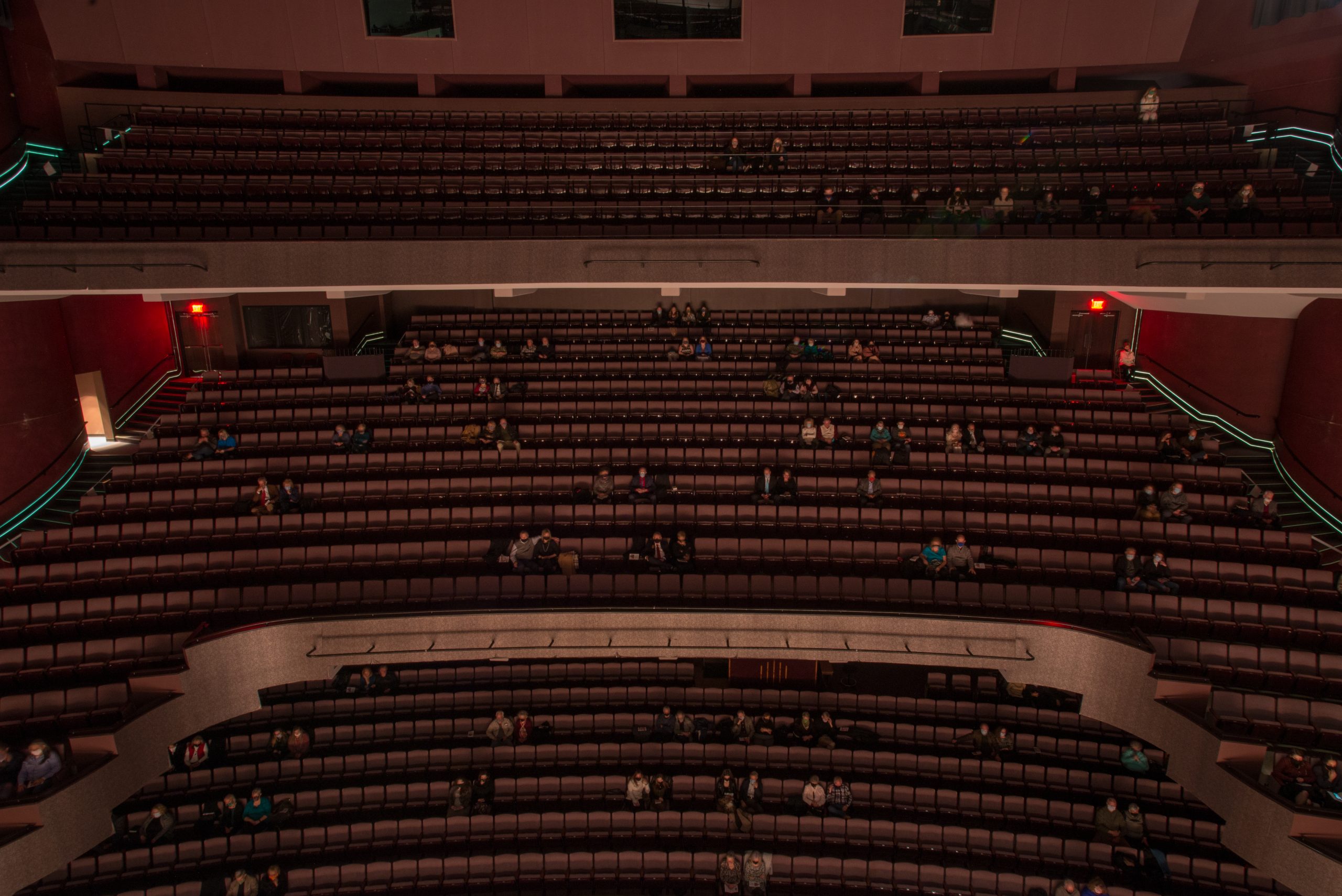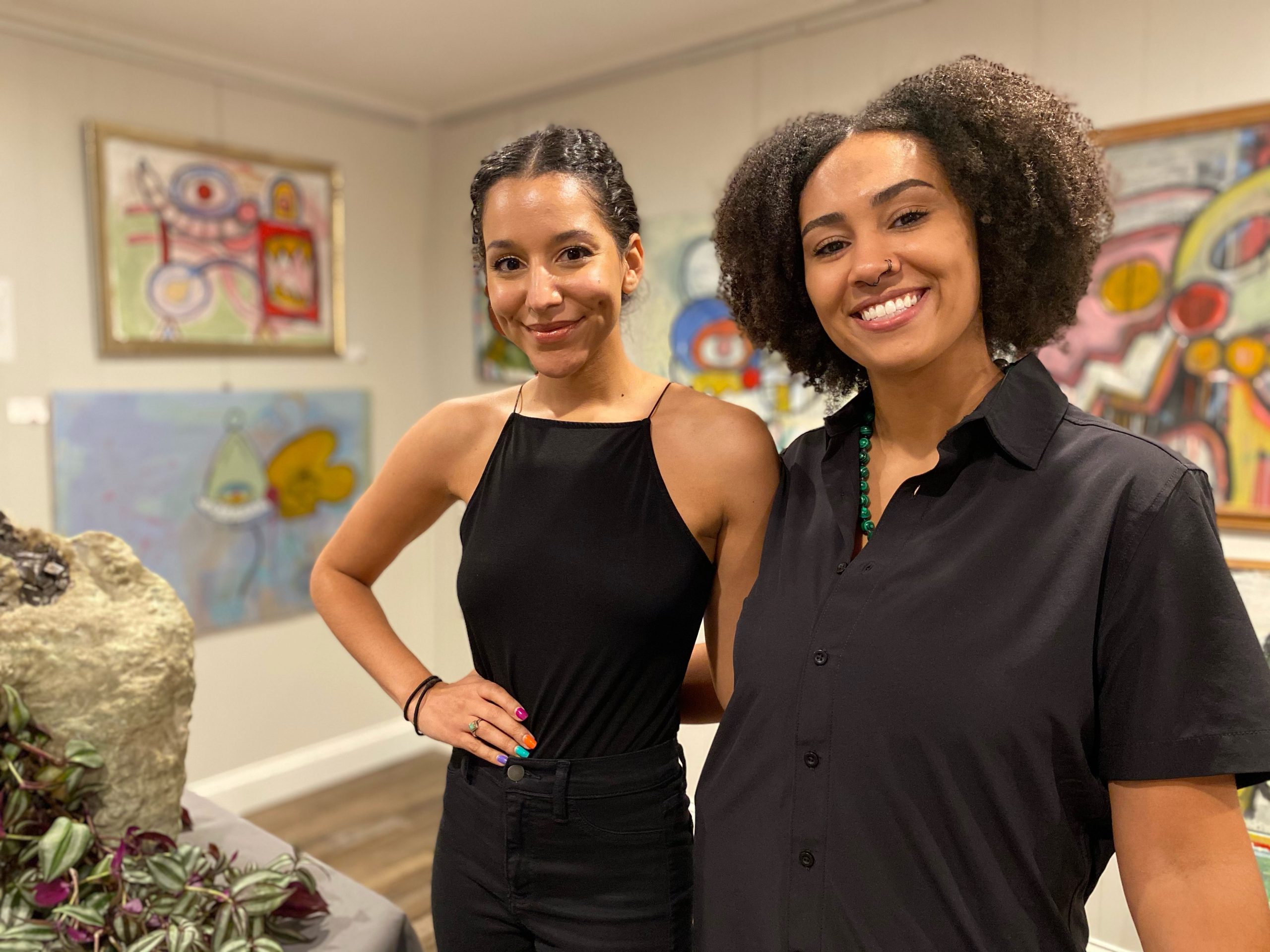It was not quite mid-March in 2020 when 41 Broadway playhouses closed their doors against COVID-19. Livelihoods were suspended for what industry leaders thought would be one daunting month. Then one month became nearly 18. Similar performance shutdowns happened in cities across America, including Springfield.
While the impact on local organizations was immediate, no one predicted the loss of touring shows would last more than a year, nor that local programs would be forced to adjust in ways never imagined.
“We were all hopeful back then it wouldn’t last a very long time,” says Joy Bilyeu-Steele, associate director at the Gillioz Center for Arts & Entertainment, “and that’s not what happened.”
While many regional theaters struggled or closed nationwide, Springfield performing arts organizations survived by tapping emergency funds through the federal CARES Act and grant programs, and most importantly they say, with the help of community arts patrons.
As mainstage shows returned in the second half of 2021, patrons turned out and were clearly hungry for live productions. Springfield Little Theatre kicked off its 2021-2022 season in September with a well-attended production of “Kinky Boots” that broke SLT’s goal record, says Shannon Sherrow, director of marketing for SLT. More successful productions followed, and 2022 ticket sales for “The Full Monty” have been strong.
“It’s just been such a positive response with audiences wanting to come back into the theater, and our numbers definitely reflect that,” Sherrow says.
Mark Templeton, managing director for Missouri State University’s Department of Theatre and Dance, says the 2021 summer Tent Theatre season felt like a coming home party. Nearby, Juanita K. Hammons Hall for the Performing Arts returned to staging shows with a sold-out concert in August. And a full five-package 2021-2022 Broadway season launched in December with a successful run of “Beautiful.” The Hall is also home to a new schedule of performances by the Springfield Symphony Orchestra. In December, the Springfield Ballet sold out its production of “The Nutcracker” in record time, says Abigail Lind, executive director. “People were wanting to get out in person, and out together,” she says.
Pandemic uncertainty
When COVID came to Springfield and the city shut down, Springfield Contemporary Theatre sent everyone home to work, little knowing that would last through the end of summer. The Gillioz Theatre canceled a sold-out show, eventually rescheduling 30 more to the following year.
Little Theatre was staging its spring show while the Springfield Ballet, Ozarks Lyric Opera and MSU programs were in final rehearsals for theirs. All were closed. Likewise, the symphony called off the rest of its spring season while Broadway tours and other national acts canceled or rescheduled dates at Hammons Hall. By summer, the Hall would scrap its Broadway plans for the following year, too. Eventually, some performing groups staged smaller, pandemic-adapted shows in late 2020 with health protocols in place and socially-distanced seating. Many filmed events and introduced live stream ticket options.
On the national front, licensing companies were bombarded with show cancellations and refund requests. They tried to persuade people to postpone instead of canceling, says MSU’s Templeton. Theaters and related organizations were trying everything they could to stay afloat. “We were very unprepared how much it was going to affect what we do,” Templeton says. “Things were pivoting every four weeks sometimes.”
When the community closed down, arts sector leaders began meeting biweekly via Zoom, facilitated through the Springfield Regional Arts Council, says Leslie Forrester, SRAC executive director. Primary concerns included the loss of ticket sales and the uncertainty over how to plan or rearrange show schedules. “We all thought, ‘Surely it will be six weeks and we’re done,’” Forrester recalls. “But then summer came, and it was still the same thing in the fall.” People were frustrated over how to move forward “when the needle keeps moving,” she says. Even now as live shows and audiences return, the impact of COVID on local and national programs is far-reaching. “It’s become part of our new normal: uncertainty and the ability to do that awful thing called pivoting,” Forrester says.
According to Americans for the Arts, the estimated financial loss to 19,398 organizations nationwide over roughly one year was $15.2 billion. Audience attendance nationwide was down an estimated 488 million. The median financial loss nationwide was $30,000; in Missouri, it was $16,850 according to the data.
Locally, the pandemic hurt budgets, reduced ticket sales, and slowed program momentum, arts organizers say. Fundraising events and galas were canceled, too, compounding losses. Other factors are also at play, Forrester says, including inflation, supply chain holdups, childcare issues and loss of employees. “It’s a really weird economy and there’s no map showing ‘Here’s how it worked before.’ It’s uncertainty with each new show or production,” she says. Plus there’s the unpredictability of COVID itself. A positive case means an employee — or performer — goes home, potentially closing a show.
With time, warm weather and vaccines, performance groups slowly moved back to staging shows. The audience response has been uplifting, but the effects of COVID are still felt. SCT typically does nine mainstage shows in a normal season. They’ve planned six for the current season, in part to provide calendar space for shifting shows if needed, Dines says. With the exception of socially-distanced Springfield Symphony concerts, Hammons Hall staged no shows for roughly 12 months; and they have 60 to 70 percent fewer events planned for 2021-2022 than typically scheduled, says Keith Boaz, the theater’s executive director: “It will be fall of this year at the earliest before we really start seeing things get back to what we will hopefully consider normal.”
Just before COVID, the symphony was on track to exceed its previous single ticket sales records, says Jennifer Cotner-Jones, the program’s executive director. While they have a full concert schedule for the 2021-2022 season, she says they lost some ground with COVID. “It’s going to take several years, probably, to get back to where we were,” she says of single ticket sales momentum.
At SCT’s December 2021 show, performed indoors with an audience, Rick Dines spoke to a guest who said it was the first live performance they’d attended since the pandemic began. People are still cautious, says Dines, artistic managing director for SCT. Like the symphony, he says Springfield Contemporary Theatre has experienced a drop in single-ticket sales, which roughly makes up half their typical audience.
Helping hands

Steele says in 2019, the Gillioz attracted audiences from 39 states and 1,071 Zip Codes. The theater’s annual budget has relied solely on ticket sales; no donations or endowments, which is rare for historic theaters, she adds. If tours dry up, so does revenue and they experienced a 91 percent loss. If not for CARES Act and grant funds — plus a successful fundraiser — they would not have survived, Steele says.
Ozarks Lyric Opera was two weeks out from staging a big production of “Pagliacci” starring Michael Spyres, OLO’s artistic director. The production was intended to tour other communities. “We had flown out a director from Vienna, Austria, and we got everything staged — and then everything shut down,” recalls Sean Spyres, OLO’s business manager and education director. “Somehow, we were able to get (the director) out of the country and back to Austria, and then we just had to sit on our hands.” After producing a few smaller shows, two years later and with strong support from patrons, OLO is preparing again to stage “Pagliacci” in March.
When some corporate sponsorships for performing arts understandably dried up during the pandemic, donations and support by individuals rose. “The beautiful thing that we saw in the pandemic, so far, is that people care about the arts, whatever their favorite form of art was,” Forrester says. “They cared enough to reach deep into their pockets and to say ‘I want to make sure that this survives through COVID.’”
Other factors have helped local organizations, too. Unlike private performing arts centers, Hammons Hall is attached to a university that provides protection. In addition, they made use of auditorium space for social distance learning. “That’s what allowed the Hall to keep our individuals on payroll and not be furloughed like a lot of private entertainment PACS,” Boaz says.
Dines says SCT was grateful for an end-of-year donation that squared their 2021 operating budget. Another helped them start an endowment fund. And when the symphony canceled concerts in 2020, most patrons donated ticket money back to SSO instead of requesting a refund. “We were very grateful for that,” says Cotner-Jones.
Weary but hopeful

With the rise and fall and rise again in COVID infection numbers, uncertainty continues to plague performance groups and theaters. “As long as it’s in the community it’s going to affect us because we deal with the community,” says Lind of the ballet. “We’re just taking it in stride; making it the best situation that we can.”
Dines remains optimistic that eventually, severe COVID spikes will end, but he and others grown weary. “I have reinvented my routine eight times,” Dines says. “I don’t want to reinvent again. I just want to do the work.”
Running a performing arts organization will likely never return to pre-COVID normal, most say. That’s not all bad. Cotner-Jones says the symphony learned to make quick decisions and find new tools to make performing arts accessible, including the use of virtual live streaming. Because of their COVID experience, the Gillioz Theatre is discussing how to build a supportive patron base. Templeton says they have learned to embrace that “the show will go on,” he says: “The pandemic has changed us, and we will survive.”
Boaz is optimistic about the future of performing arts in Springfield and beyond, especially with the reopening of Broadway. “We are a lot better off than we were six months ago and a lot better off than 12 months ago,” Boaz says. “We’ve all learned we can’t do things the way we used to do, so we’ve learned and adapted, and we’ll continue to do that as our new normal for the foreseeable future.”
More information
To buy tickets for shows, make a donation or learn more about organizations featured in this story, click the links below.
Juanita K. Hammons Hall for the Performing Arts: https://www.hammonshall.com/
Missouri State University’s Department of Theatre and Dance: https://theatreanddance.missouristate.edu/CurrentProductions.htm
MSU’s Tent Theatre: https://tenttheatre.missouristate.edu
Ozarks Lyric Opera: https://www.ozarkslyricopera.com
Springfield Ballet: https://springfieldballet.org
Springfield Contemporary Theatre: https://www.springfieldcontemporarytheatre.org
Springfield Little Theatre: https://www.springfieldlittletheatre.org
Springfield Regional Arts Council: https://www.springfieldarts.org
Springfield Symphony Orchestra: https://www.springfieldmosymphony.org





